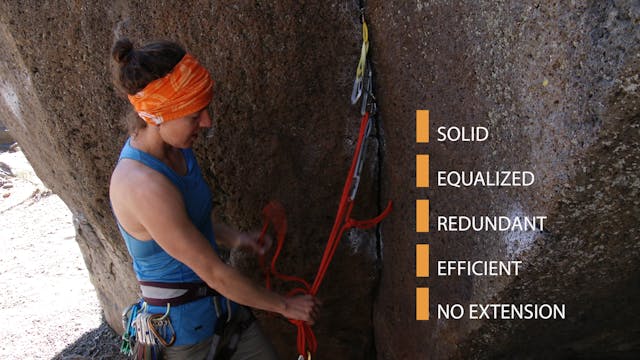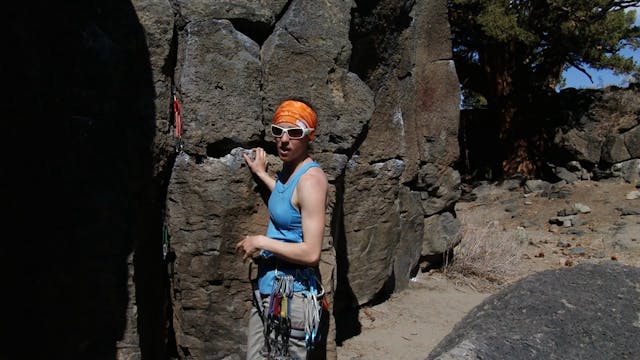Traditional Climbing: 11. Building Traditional Anchors - Part 1 of 2
Traditional Climbing
•
4m 46s
In this video we review the fundamentals of building a traditional anchor system. You’ll notice we revisit the acronym of S.E.R.E.N.E., however this time we have added an extra “E”, which will be covered in the next video “Building Trad Anchors - S.E.R.E.N.E.”
For now, let’s start from the top:
Solid -
Similar to sport climbing, we want to make sure the rock where we are building the anchor is solid and strong.
However, in contrast to sport climbing which only uses bolted anchors, traditional anchors can be created using a mix of passive and active protection. A “stopper” (or “nut”) is considered passive protection, because it slots into a constriction. Cams (spring-loaded camming devices) are an example of active protection, because they have springs that hold them in place.
Traditional anchors should have at least three protection points—ideally a mix of cams and stoppers.
Equalized -
Using a cordelette or double length sling, clip into each of the protection points, and pull down on the parts of cordelette between each protection point (in the direction of pull). Then tie a figure eight or overhand knot to create the equalized master point.
Once you’ve created the master point, pull down on the system to make sure that each leg of the anchor shares the load of the climber equally.
Also check to make sure the angle of your anchor is under 90 degrees. The wider the angle, the more force that is applied to each of the individual protection points. At 120 degrees, the force of a fall is doubled on each of the pieces.
We hope you found this video helpful. Feel free to comment below with questions or thoughts!
Please remember, climbing is inherently dangerous. Climb at your own risk.
Up Next in Traditional Climbing
-
Traditional Climbing: 12. Building Tr...
In this video we continue reviewing the fundamentals of building a traditional anchor system. In our last video, we covered Solid and Equalized, now let’s review the following:
Redundant -
Check each of the pieces in the anchor to determine whether a failure in one point can cause the enti...
-
Traditional Climbing: 13. Assessing T...
In this video we look at ways to assess rock quality for your traditional anchor. Consider two points:
1. Check to make sure the rock itself is solid by patting the rock with your hand. Listen for hollow sounds which might identify a detached block that is not visibly obvious. Avoid placing pr...
-
Traditional Climbing: 14. Alternative...
What happens if you run out of slings while leading a pitch and arrive at the anchor with only a few cams—then realize you also forgot to grab your partner’s cordelette when you swung leads at the last transition. Don’t worry, use your rope!
Step 1: Place 3 pieces of gear.
Step 2: Give your...


